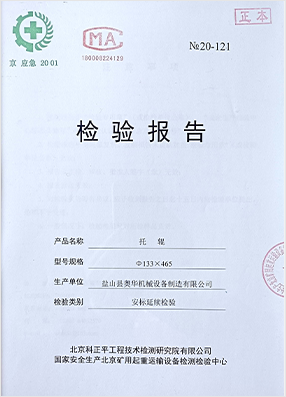 Afrikaans
Afrikaans  Albanian
Albanian  Amharic
Amharic  Arabic
Arabic  Armenian
Armenian  Azerbaijani
Azerbaijani  Basque
Basque  Belarusian
Belarusian  Bengali
Bengali  Bosnian
Bosnian  Bulgarian
Bulgarian  Catalan
Catalan  Cebuano
Cebuano  Corsican
Corsican  Croatian
Croatian  Czech
Czech  Danish
Danish  Dutch
Dutch  English
English  Esperanto
Esperanto  Estonian
Estonian  Finnish
Finnish  French
French  Frisian
Frisian  Galician
Galician  Georgian
Georgian  German
German  Greek
Greek  Gujarati
Gujarati  Haitian Creole
Haitian Creole  hausa
hausa  hawaiian
hawaiian  Hebrew
Hebrew  Hindi
Hindi  Miao
Miao  Hungarian
Hungarian  Icelandic
Icelandic  igbo
igbo  Indonesian
Indonesian  irish
irish  Italian
Italian  Japanese
Japanese  Javanese
Javanese  Kannada
Kannada  kazakh
kazakh  Khmer
Khmer  Rwandese
Rwandese  Korean
Korean  Kurdish
Kurdish  Kyrgyz
Kyrgyz  Lao
Lao  Latin
Latin  Latvian
Latvian  Lithuanian
Lithuanian  Luxembourgish
Luxembourgish  Macedonian
Macedonian  Malgashi
Malgashi  Malay
Malay  Malayalam
Malayalam  Maltese
Maltese  Maori
Maori  Marathi
Marathi  Mongolian
Mongolian  Myanmar
Myanmar  Nepali
Nepali  Norwegian
Norwegian  Norwegian
Norwegian  Occitan
Occitan  Pashto
Pashto  Persian
Persian  Polish
Polish  Portuguese
Portuguese  Punjabi
Punjabi  Romanian
Romanian  Russian
Russian  Samoan
Samoan  Scottish Gaelic
Scottish Gaelic  Serbian
Serbian  Sesotho
Sesotho  Shona
Shona  Sindhi
Sindhi  Sinhala
Sinhala  Slovak
Slovak  Slovenian
Slovenian  Somali
Somali  Spanish
Spanish  Sundanese
Sundanese  Swahili
Swahili  Swedish
Swedish  Tagalog
Tagalog  Tajik
Tajik  Tamil
Tamil  Tatar
Tatar  Telugu
Telugu  Thai
Thai  Turkish
Turkish  Turkmen
Turkmen  Ukrainian
Ukrainian  Urdu
Urdu  Uighur
Uighur  Uzbek
Uzbek  Vietnamese
Vietnamese  Welsh
Welsh  Bantu
Bantu  Yiddish
Yiddish  Yoruba
Yoruba  Zulu
Zulu Understanding the Relationship Between Driven and Driver Pulleys in Mechanical Systems
Understanding Driven and Driver Pulleys Mechanisms of Motion
In the world of mechanical engineering, the concepts of driven and driver pulleys are fundamental to the functionality of various machinery and systems. Pulleys are integral components that facilitate the transfer of power and motion in many applications, from simple systems like exercise equipment to complex manufacturing machinery.
The Basics of Pulleys
A pulley is a wheel on an axle or shaft designed to support movement and change the direction of force applied to a rope or cable. The system typically consists of two types of pulleys the driver pulley and the driven pulley.
- Driver Pulley This is the pulley that receives power from an external source, usually powered by a motor or human effort. When the driver pulley rotates, it creates motion and tension in the belt or rope attached to it. - Driven Pulley In contrast, the driven pulley is the component that receives power from the driver pulley. By rotating due to the force transferred from the driver pulley, the driven pulley can perform work or move another connected part of the machinery.
How They Work Together
The interaction between the driver and driven pulleys is crucial for converting rotary motion into linear motion or varying speeds and torques. When a motor spins the driver pulley, it engages the belt or rope, which subsequently wraps around the driven pulley. The tension created in the belt allows the motion to be transferred, effectively multiplying the output torque or speed based on the diameters of the pulleys.
For instance, in a simple scenario where the driver pulley is larger than the driven pulley, the driven pulley will spin faster than the driver pulley, providing a speed increase. Conversely, if the driven pulley is larger, it will rotate more slowly, allowing for increased torque. This principle is widely utilized in automotive engines, conveyor systems, and various mechanical devices.
Applications in Industry
driven pulley and driver pulley

The driven and driver pulley system is employed in countless applications across various industries. In automotive engineering, the serpentine belt system relies on the coordinated action of multiple pulleys to drive components such as the alternator, water pump, and air conditioning compressor. Efficient functioning of these systems is vital for overall vehicle performance.
In manufacturing, belt conveyors that transport materials utilize driven and driver pulleys to move products seamlessly through production lines. By varying pulley sizes and configurations, manufacturers can optimize speed, power consumption, and efficiency.
Additionally, in the fitness industry, devices like treadmills and elliptical trainers make extensive use of pulley systems to provide adjustable resistance and moving parts. A well-designed pulley system can enhance user experience by allowing for smooth transitions between different intensity levels during workouts.
Maintenance and Considerations
While driven and driver pulleys are durable, they require consistent maintenance to ensure smooth operation. Regular inspections are necessary to check for wear and tear on belts, alignment of pulleys, and lubrication of moving parts. Any misalignment or deterioration can reduce efficiency and increase the risk of equipment failure.
Moreover, understanding the principles of force, tension, and motion can lead to better designs and adaptations of pulley systems. Engineers must consider the load characteristics, environmental factors, and specific operational requirements when selecting materials and making design choices.
Conclusion
In conclusion, driven and driver pulleys are vital components that play a significant role in mechanical systems. Their ability to transmit motion efficiently makes them indispensable in various applications across industries. By understanding their function and importance, engineers can innovate and improve existing technologies, leading to enhanced performance and reliability in machinery. Whether in a vehicle, a factory, or a fitness center, the harmonious interaction of driven and driver pulleys continues to shape the way we harness power and motion in our daily lives.
-
Revolutionizing Conveyor Reliability with Advanced Rubber Lagging PulleysNewsJul.22,2025
-
Powering Precision and Durability with Expert Manufacturers of Conveyor ComponentsNewsJul.22,2025
-
Optimizing Conveyor Systems with Advanced Conveyor AccessoriesNewsJul.22,2025
-
Maximize Conveyor Efficiency with Quality Conveyor Idler PulleysNewsJul.22,2025
-
Future-Proof Your Conveyor System with High-Performance Polyurethane RollerNewsJul.22,2025
-
Driving Efficiency Forward with Quality Idlers and RollersNewsJul.22,2025





























